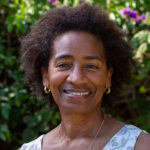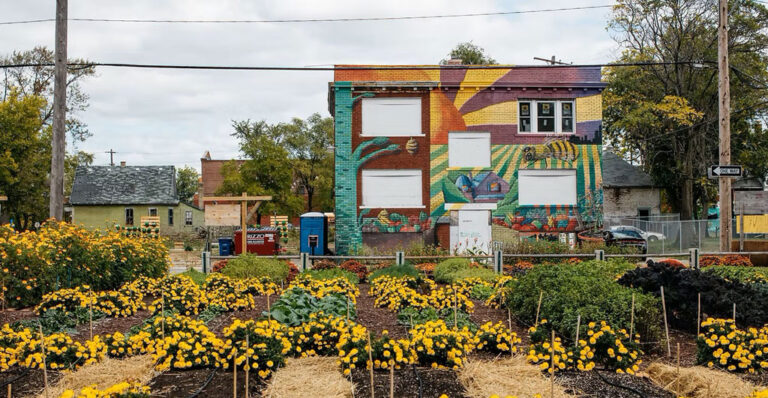Welcoming a New President to AAG: Interview with Rebecca Lave


For the last President’s Column of her term, President Marilyn Raphael sat down to interview incoming President Rebecca Lave about her experiences within the discipline and her aspirations for her upcoming leadership at AAG. The following conversation offers insight into the new directions for the 2023-24 presidency.
MR: What brought you to geography, Rebecca?
RL: I came into geography from a rather naïve understanding that geography was the place that put physical science and social science together, and that’s what I wanted to do. I wanted to write and think about the political economy of stream restoration and how policy physically changes the landscape. I wanted a discipline where I could really understand and focus on the interaction of physical and social forces. It felt to me like geography was the obvious place to go for that. This was for my PhD; my earlier degrees were not in geography.
So I applied and I got in, and then I went to my first committee meeting, where they were quite shocked and not pleased that I wanted to do physical geography coursework. But because there were physical geographers in the department and I knew them, I could go to them and ask if I could take their classes, and they said yes. So it did end up working out, but there was an initial shock of discovering that the field of geography was actually more balkanized than I had understood from the outside.
I think that it’s very helpful that I was 30 when I started my PhD. I took time to do other things between high school and college, and college and my masters, and masters and my PhD. So it meant that when my initial committee said no, I thought, “Well, you’re not the boss of me. (Laughter from both) I’m here for my own intellectual path, and I’m going to figure out how to do what I want to do.” I don’t think I would have had the confidence to do that at age 21—speaking just about myself at 21.
MR: I had a similar experience from the opposite side when I took a political geography course in graduate school. The human geography professor was very welcoming, and it became one of my favorite classes. My physical geography professors wondered aloud — why was I doing this? I didn’t get the pushback that you did, Rebecca, because I didn’t ask permission, I just signed up. It’s so interesting to see the kneejerk responses from the two sides of the discipline.
MR: What would you tell students about what makes geography so relevant to the questions and issues of the day?
RL: The first thing I tell students is that geography is the field that has the most intellectual freedom of any part of the academy. To me the beautiful part about geography is that you have no excuse for ever being bored. Every week, when you go into colloquium, you’re hearing about something totally different and outside of the normal academic arena that you’re used to, and I love that about geography.
I can’t think of a really pressing issue in the world today that geographers don’t study.
In addition to the intellectual freedom, geographers are talking about everything from urban environmental justice to migration and immigration to natural hazards to causes of and responses to climate change. I can’t think of a really pressing issue in the world today that geographers don’t study. And that, to me, makes it an incredibly vital discipline.
MR: Yes, I have to agree with you. What prompted you to run for office in the AAG?
RL: It was not something I’d ever considered doing. I was quite surprised when I got the email from the nominating committee, asking me to talk to them about running for the presidency. I thought about it for a while and thought it was only worth doing if I had a serious intervention I wanted to make — and in fact, I have two — so on the basis of that, I decided to run. But it was quite unexpected for me.
MR: Do you want to say more about what those interventions were?
RL: The first is that for the future of geography as an institution and intellectually, it’s important to have multiple strong bridges that connect human and physical geography. I think we already have one strong one in land change science, but until pretty recently, I would say that land change science hasn’t incorporated the more critical end of human geography. So one of my goals in running for AAG president was to promote more interdisciplinary bridges in geography.
The second intervention I want to make springs from having heard repeatedly from younger scholars and graduate students that they wanted to do community-engaged work but the penalties for doing so were so strong in terms of time to completion of dissertation, in terms of number of publications for tenure, all these things that stood in the way of doing community-engaged work.
One of my goals in running for AAG president was to promote more interdisciplinary bridges in geography.
Because those kinds of community-oriented, justice-based work are so important to me, I felt really saddened by that. So my second big initiative is to encourage AAG and anglophone geography more broadly to open up avenues to value and protect public and engaged scholarship.
MR: What would you say to a member considering volunteering?
RL: The first thing I would say is, even if you are coming from a department that hasn’t been involved before, the door is much more open than it looks from the outside. There are a number of avenues for getting involved, starting at the task force and committee level, then moving on to Council. I would really encourage it, because the organization is only as strong as the people it involves and the representation it achieves. I have now learned from being involved that it’s worth it, and really important to all of our futures in the field to support the organization that we belong to.
The second thing I would say is that it’s very interesting [to volunteer for AAG]. That’s another reason to do it! I have learned a whole lot about how AAG works. Also, the other councilors are coming from so many different institutions and regions, and I am learning so much about what geography looks like at other institutions inside and outside academia. That’s been really great.
MR: I really appreciate having been able to serve. I think, as you said, service to the organization is really important. It’s for us: the organization supports us, and we support it. It’s a reciprocal relationship. Now, my last question is what initiatives and projects you are most excited about right now?
RL: I’ll say four things.
First, I continue to be really excited about the work of the Climate Action Task Force. I’ve become a member of that task force and I will be working on ways to continue to make AAG less impactful on the climate.
Second, with the hiring of Risha Berry as the new Director of Diversity, Equity, and Inclusion at AAG, there will be a lot of exciting stuff happening around diversity and inclusion, and I am excited to keep pushing on that and helping support it.
Then, on things that I am taking more of a lead on, we started a Task Force on Public and Engaged Scholarship six months ago with the goal of doing several things:
- Developing an AAG policy in support of public and engaged scholarship as a legitimate form of geography research.
- Developing sample guidelines for tenure and promotion and for graduate theses and dissertations that departments could adopt or tailor to their own purposes, that value and protect public and engaged scholarship.
- Creating similar documents for non-academic organizations such as research agencies or nonprofits that do that kind of work. How do we better support public and engaged scholarship in personnel reviews?
- Reaching out to federal funding agencies who are increasingly encouraging researchers to include some element of public and engaged scholarship in their work but may not be as clear on what a good project looks like.
Finally, as part of being Vice President, I visited the University of Tennessee at Knoxville, and graduate students there suggested having a day at AAG with a stream of events that is just for undergraduates and early graduate students to focus on things like professionalization and the many things you can do with a geography degree. This is a way both to support our students and to build ties across physical-human geography divides because everyone would be in the same workshops and getting to meet people from other campuses. This is a common sort of event at peer organizations, and it seems like something AAG could do.
MR: Thank you for sharing your vision with us, Rebecca. I know this is going to be a great year.
RL: Thank you!
DOI: 10.14433/2017.0131
Please note: The ideas expressed in the AAG President’s column are not necessarily the views of the AAG as a whole. This column is traditionally a space in which the president may talk about their views or focus during their tenure as president of AAG, or spotlight their areas of professional work. Please feel free to email the president directly at raphael [at] geog [dot] ucla [dot] edu to enable a constructive discussion.


